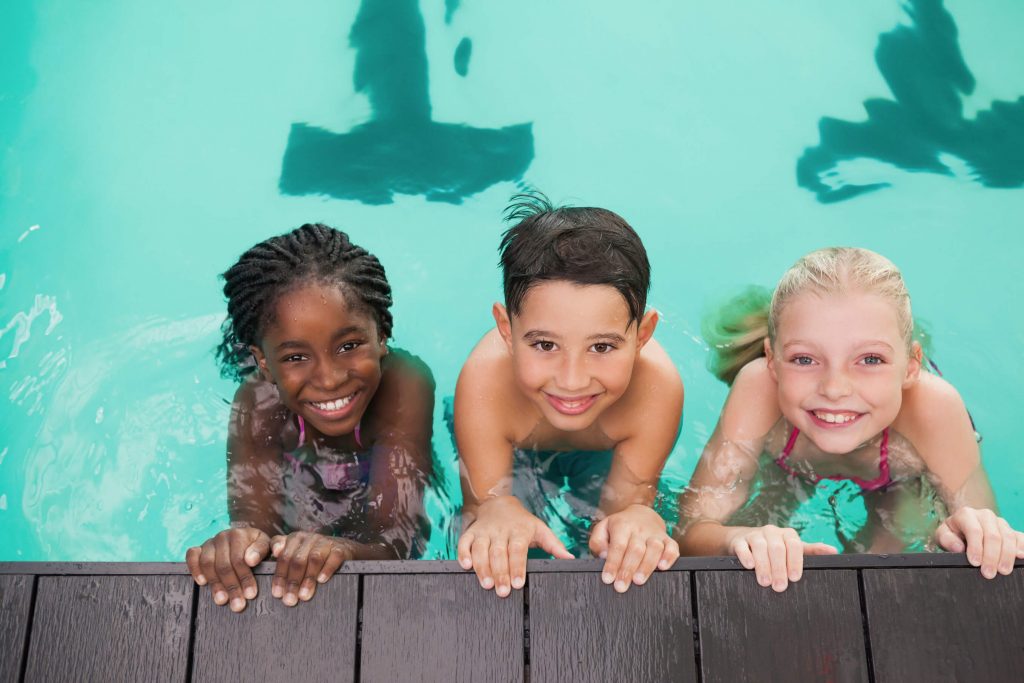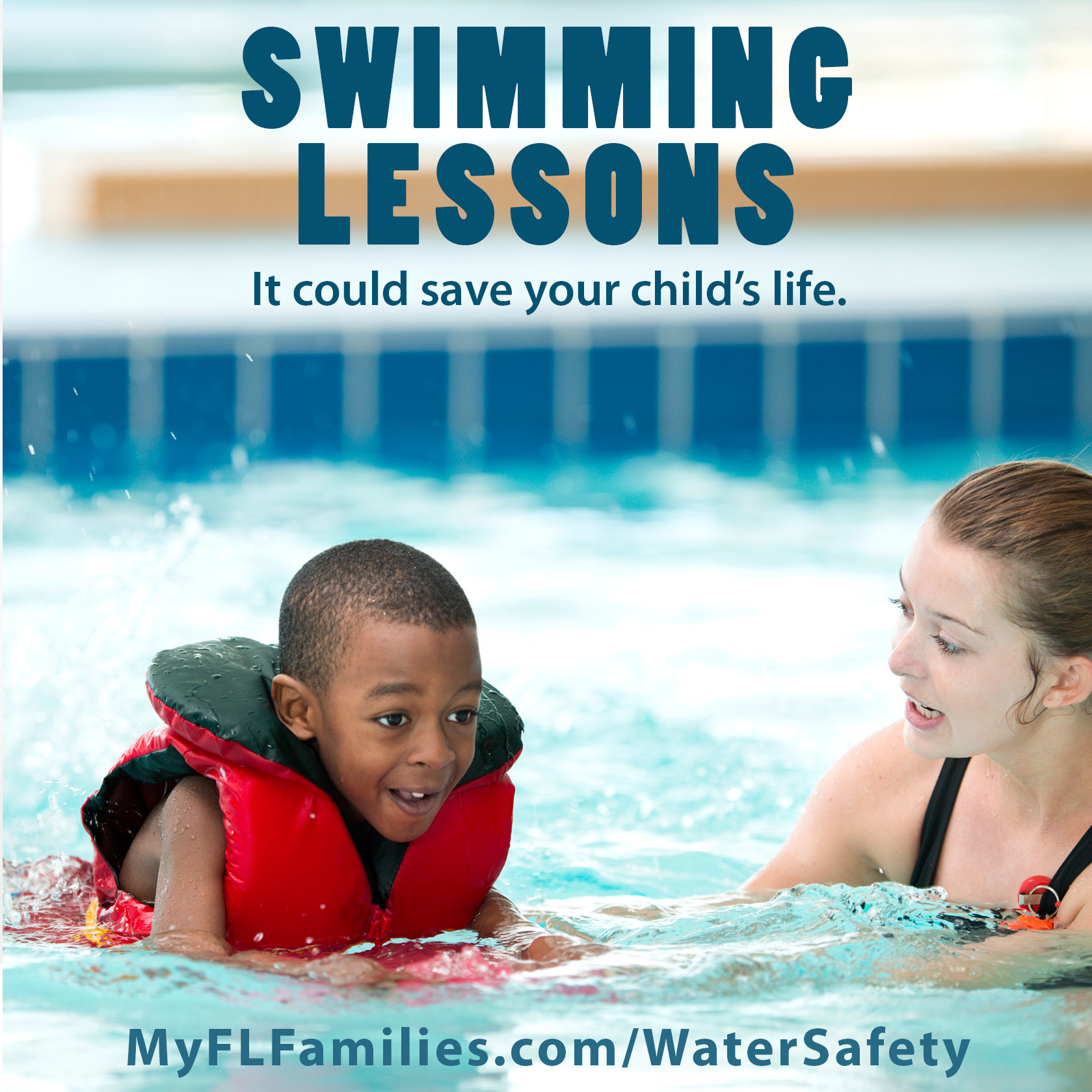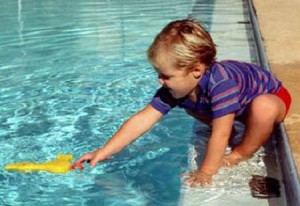If your kids will be anywhere near a pool, beach, or lake this summer, read this article now -- it could save your child's life.
Watch Out Near the Water
On May 3, 2002, Tom and Sheryl Lazare were unloading their car after a trip to the store when 17-month-old Anya toddled out of the garage and through an open gate leading to the pool area of their Villa Park, California, home.  When they realized she was missing, they called for their older kids and scattered to look for her. Sabrina, then 14, and Foya, then 8, spotted Anya's body in the pool and screamed for help. Sheryl quickly pulled her out and began CPR. Paramedics arrived and rushed her to the hospital, but they couldn't resuscitate her. Anya had been underwater for too long.
When they realized she was missing, they called for their older kids and scattered to look for her. Sabrina, then 14, and Foya, then 8, spotted Anya's body in the pool and screamed for help. Sheryl quickly pulled her out and began CPR. Paramedics arrived and rushed her to the hospital, but they couldn't resuscitate her. Anya had been underwater for too long.
"We try to remember what a happy, bouncy child she was, but there are moments when we just sit there and sob," says Sheryl, who is still tortured by the thought that she and her husband were doing something unimportant when their daughter drowned.
"It happened so fast. She was out of our sight for less than five minutes." Sheryl thinks that Anya fell in because she was trying to reach a blue exercise ball that had been floating in the water. The couple have since had the in-ground pool filled with dirt and turned into a putting green because Anya loved to putt. "We couldn't bear to look at it," Sheryl says.
The reality is grim: Water is a big danger for little kids. According to the Centers for Disease Control and Prevention, every year about 800 children drown -- the number of students on 11 full school buses. Drowning is the leading cause of injury-related death among children ages 1 to 3, and the second-leading cause among kids under 15. Despite these alarming figures, only 34 percent of parents know that water is one of the top killers of kids, according to a survey by Safe Kids Worldwide, a child-safety advocacy group.
"Drowning is quick and silent," says Parents advisor Martin Eichelberger, MD, president and CEO of Safe Kids and director of emergency trauma and burn services at Children's National Medical Center, in Washington, D.C. "Young kids rarely make a big splash, thrash around, or scream for help like you see on TV. They usually fall in head first and sink to the bottom like a rock." A child who's underwater will lose consciousness after two minutes and suffer irreversible brain damage within four to six minutes.
Sadly, poor supervision is to blame for most drownings: Nine out of 10 children who've died in the water were being watched by an adult, according to Safe Kids. "Everyone thinks, 'It won't happen to me because I keep an eye on my children,'" says Maureen Williams, president of the National Drowning Prevention Alliance, in Huntington Beach, California. But small children move fast and can fall into the water in the seconds it takes you to answer your cell phone or grab a towel.
Watch Out Near the Water
Most toddlers and preschoolers drown in swimming pools, whereas kids ages 5 to 14 are more likely to drown in oceans, lakes, or rivers. (Babies are at greatest risk in bathtubs.) And even when parents know that a child has fallen into a pool or a lake, she can be surprisingly difficult to find. Kelly Hines, of Indianapolis, almost drowned in her family's above-ground pool when she was 13 months old. Wearing a light-pink swimsuit, she walked over to the edge and then disappeared from view. "Our pool was only 4 feet deep, but we couldn't see her," recalls her mother, Susan, who was on the deck with Kelly's twin sister. Luckily, Kelly's dad was standing in the water and able to find and retrieve her in time. "The next day I went and bought her a bright, multicolored swimsuit," Susan says.
Preventing a tragedy requires multiple layers of protection. Here are safety guidelines that every parent should follow.
Always stay within arm's reach. "When your child is in or near the water, you need to keep your eyes on her at all times," says Tom Krzmarzick, MD, medical director of the Regional Pediatric Trauma and Emergency Center at the Children's Medical Center of Dayton. If you need to leave a pool area, take your child with you. Don't let babysitters take her swimming unless you're confident that they'll watch her constantly.
Select swimming areas carefully. Make sure that beaches or lakes are well maintained and supervised by a lifeguard. Stay in the designated swimming area, and don't go into the water if there are strong waves or currents that could pull your child under.
Use proper safety devices. Arm floaties and air-filled tubes aren't approved for safety and won't protect your child against drowning. Insist that your child wear a U.S. Coast Guard-approved life preserver whenever she's on a boat or raft, is near a river, is participating in water sports, or is near open bodies of water.
Don't rely on the lifeguard. Of course, it's best to have a water-safety expert nearby, but lifeguards don't always notice when kids slip under the water, says Dr. Eichelberger. It's up to you to keep your child safe.
Be wary of plastic or inflatable pools. Experts caution against using large kiddie pools because they're too heavy to empty after each use and are usually not protected by fences and covers. If you use a smaller baby pool, be sure to drain it afterwards, and don't leave it outside where it can accumulate rainwater. Watch your child even when he's in very shallow water. "Most parents think that a 3- or 4-year-old can just stand up and get out of a baby pool," says Dr. Krzmarzick. "But if he falls and gets a mouthful or a lungful of water, he can get scared and not know what to do. Even a child that age can drown in a few minutes."
Pool Protection
Backyard pools are increasingly popular, but owning one is a major responsibility. In April, 4-year-old twins in Union, New Jersey, snuck out to their pool after their mom had dozed off. They drowned. Take these precautions to protect your kids and any other children who visit your home.
Know where your child is at all times. If she's missing, check the pool first. Most kids who fall into pools do so when their parents are inside and have no idea their children are near the water. "I have five children, and I know how hard it is to keep track of your child 100 percent of the time -- but if you own a pool, you have to," says Dr. Krzmarzick. Emphasize the need for constant supervision to babysitters.
Surround your pool or hot tub on four sides with a fence that is at least 4 or 5 feet high. "This is called isolation fencing, and it prevents direct access to the pool," says Williams. Isolation fencing that's tough for kids to climb on can prevent more than half of pool drownings, according to the American Academy of Pediatrics (AAP). Make sure that the gate leading to your pool is self-closing and self-latching, and that it opens out. Latches should be above a child's reach, and the space between the bottom of the fence and the ground should be less than 4 inches. Never prop open a gate to the pool area.
Set up several roadblocks. Equip doors, gates, and windows that lead to the pool or hot-tub area with locks and alarms. "You should be able to hear a buzzing noise every time the door or gate opens," says Dr. Krzmarzick. It's safest to also invest in a sonar device that sets off an alarm when something enters the water; if that isn't practical, get a floating alarm that goes off if the water is disturbed. Cover your pool with a rigid safety cover (preferably a motorized one) whenever you're not using it, even during swimming season. With an above-ground pool, remove ladders and steps when they're not in use.
Don't leave toys in the pool area or use chemical dispensers that look like toys. Your child might run after a ball, for example, and trip.
"I remember a 2-year-old who rode his tricycle into the pool area and fell off into the water," says Rohit Shenoi, MD, an emergency-room physician at Texas Children's Hospital, in Houston..
Be prepared for an emergency. Keep a phone by the pool so you can call 911. Learn CPR, and make sure your child's caregivers know it too. "The most important factor in saving your child's life is to pull him out of the water quickly and start CPR immediately, even before EMS arrives," says Dr. Shenoi.
Drain Alert
Few parents realize that children can die in a pool or hot tub by getting sucked down and trapped in a drain. A child's hair or bathing suit can also get stuck. Since 1985, 34 kids under age 15 have died and 130 have been injured in accidents like this, reports the Consumer Product Safety Commission.
In 2002, 7-year-old Graeme Baker, the granddaughter of former Secretary of State James Baker, became entrapped by a hot-tub drain when she was at a graduation party with her mom, Nancy, and her four sisters. Nancy jumped into the water and tried to pull Graeme out, but the suction was too strong. "I was in a panic and kept coming up for air, yelling for help," recalls Nancy, of McLean, Virginia. It took two men to finally free Graeme, but she didn't survive. Graeme's horrifying death has driven her mother to lobby for mandatory safety standards for drains.
Protect your child by making sure that any pool or hot tub she uses has anti-entrapment drain covers. It should also have at least two drains for each pump, which will reduce the powerful suction if one drain is blocked, says Dr. Shenoi. Single-drain pools, hot tubs, whirlpools, and spas should have safety vacuum-release systems, which automatically release the suction if a drain is blocked. Watch your child closely and make sure she doesn't swim or play near drains. Tie her hair back or have her wear a bathing cap, and make sure her swimsuit fits snugly, with no loose ties.
The bottom line is that drowning is almost always preventable, emphasizes Dr. Eichelberger. "Whenever you're in or near the water, you should be able to reach out and touch your child. Sadly, when a child drowns or is disabled after a near-drowning, parents have to live with the fact that they could have done something to protect him. You never want to be in that position."
Is Your Child Taking Swimming Lessons This Summer?
Kids are generally not developmentally ready for formal swimming lessons until age 4, according to the AAP. Studies show that starting lessons earlier doesn't help kids learn to swim faster, doesn't lower their risk of drowning, and may give parents a false sense of security. (The AAP doesn't object to classes for babies and toddlers in which parents are also in the water.)
"Your child needs to be ready both physically and mentally," says Thomas Heneghan, a water-safety expert at the American Red Cross, in Washington, D.C. "He needs to have a certain amount of strength and coordination to be able to get in and out of a pool, take direction from the instructor, wait his turn, and cooperate with other children."
Look for a program that has certified instructors and groups kids according to their abilities. It's best for your child to take lessons every year to refresh her skills and learn new ones, but don't let her comfort in the water make you lax about safety. "If a child panics, the skills she's learned may not come back to her," Heneghan says.

